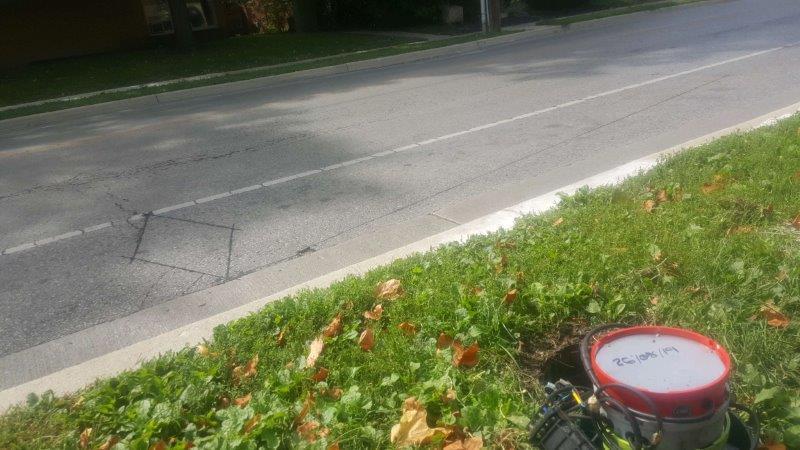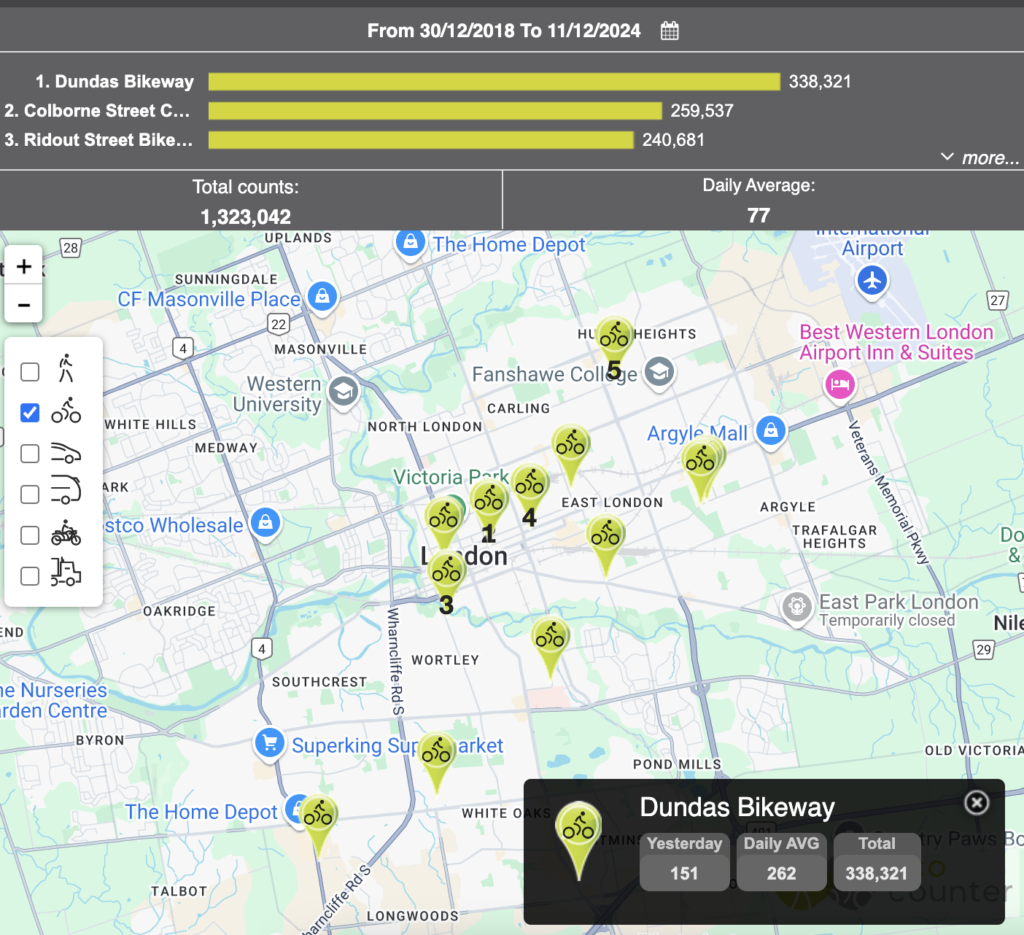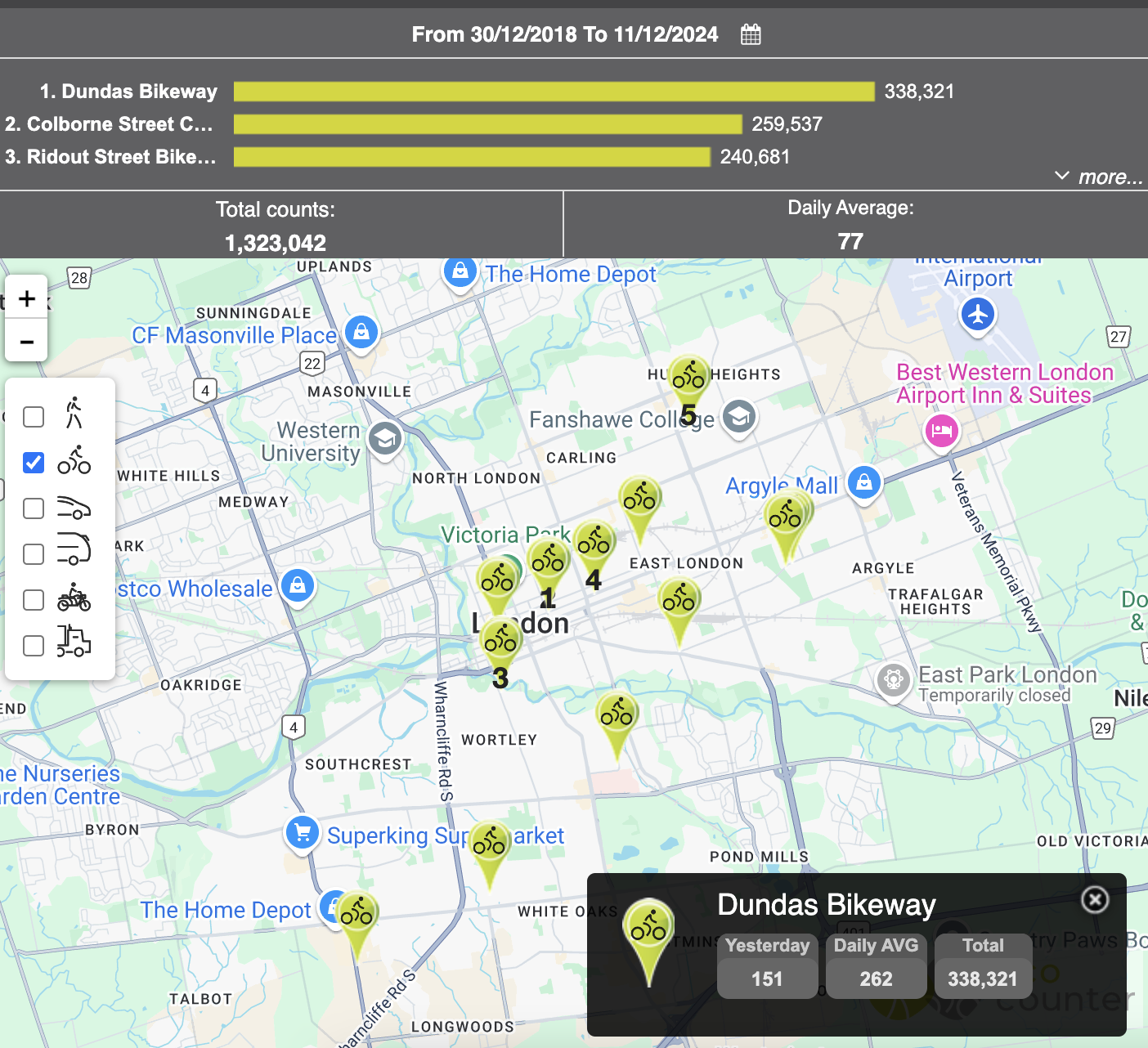You’ve probably heard the claim before: “Nobody uses the bike lanes!” On the surface, it might seem convincing, especially if you’re driving down the street and don’t notice anyone cycling. But let’s pause for a moment and dig deeper. Rather than relying on feelings and casual observations, let’s turn to actual data to explore this.
Why Our Eyes Can Be Misleading
Human perception is far from perfect. When driving, most people are focused on their journey, not on counting cyclists. Even during a short drive, you’re only on a given stretch of road for a brief moment, and your snapshot observation might not reflect the reality of daily or even hourly bike lane usage.
This is where data comes in. The City of London has invested in tools to monitor bike lane usage with actual counters, which provide concrete numbers instead of anecdotes. Did you know you can access this data yourself? Platforms like Eco-Counter’s public dashboard offer insights into cycling activity across the city.
Platforms like Eco-Counter’s public dashboard offer insights into cycling activity across the city.

What the Data Shows
The City of London’s cycle counters are strategically placed to monitor bike traffic throughout the year. These counters measure actual usage at different times of the day, week, and even season, giving a fuller picture of how bike lanes are utilized.
Here are some surprising findings from the data:
- Cycling Peaks During Certain Times: Just like roads experience rush hours, bike lanes see their busiest times during morning and evening commutes. If you’re checking at midday or in the evening, you might not see as many riders—but that doesn’t mean the lanes aren’t busy when it matters most.
- Seasonal Variations: As you might expect, bike usage decreases in colder months, but it doesn’t disappear. Plenty of Londoners are dedicated year-round cyclists, especially with the rise of e-bikes and all-weather cycling gear.
- Year-over-Year Growth: As more infrastructure is added, and more people become comfortable using bikes for transportation, the numbers are steadily increasing. This is part of a global trend: build it, and they will come.
The Bigger Picture: Why Bike Lanes Matter

Even if bike lanes aren’t packed at all hours, their presence serves a broader purpose:
- Safety: Dedicated bike lanes make cycling safer, encouraging more people to ride who might otherwise feel intimidated.
- Efficiency: Every cyclist represents one less car, reducing traffic congestion for everyone.
- Environmental Benefits: Bikes produce zero emissions, helping us move toward a more sustainable city.
Don’t Just Take Our Word for It—Check Out the Data!
The next time someone says, “Nobody uses the bike lanes,” share the link to the City’s Eco-Counter dashboard. Data doesn’t lie, and it’s a powerful way to counter misconceptions with facts.
London’s cycling infrastructure is growing, and the numbers show that it’s making a difference. So, let’s move beyond the myths and continue building a city that works for everyone—on two wheels, four wheels, or even just two feet.
